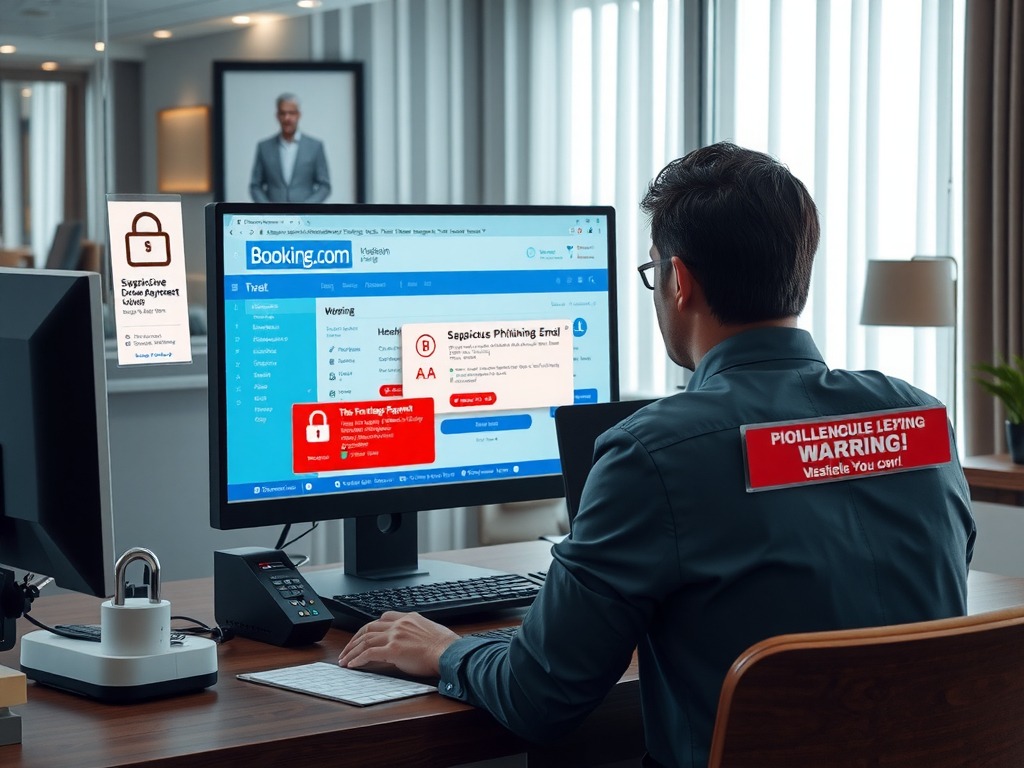Introduction
The hospitality sector has long been a lucrative target for cybercriminals due to the wealth of personal and financial data it holds. On 2025-11-07, AlienVault released a detailed threat report titled “Booking.com Phishing Campaign Targeting Hotels and Customers” that exposes a sophisticated operation aimed at Booking.com partners and their guests. The attackers employ a multi‑stage strategy that begins with compromising hotel administrators, proceeds to hijack booking management accounts, and culminates in a double‑payment scam against unsuspecting travelers. This article translates the technical findings of the report into a threat assessment format that security analysts can use to defend their organizations.
Threat Overview
The campaign is orchestrated by an unknown actor group that has demonstrated a high level of technical skill and operational security. The attackers use malware such as PureRAT to infiltrate hotel admin systems. Once inside, they gain access to the Booking.com booking management interface, which allows them to manipulate reservation data. The final stage of the attack involves sending spear‑phishing emails that impersonate Booking.com, directing guests to malicious landing pages that use the ClickFix social engineering tactic. Victims are tricked into paying twice for their reservations, with the first payment captured by the attackers and the second by the compromised hotel account.
Attack Lifecycle
- Reconnaissance: The group identifies high‑value targets by scanning for public-facing Booking.com partner portals and identifying weak or reused credentials.
- Initial Compromise: Using tailored phishing emails or exploiting known vulnerabilities, attackers deploy PureRAT to gain persistence on hotel admin machines.
- Privilege Escalation: Once inside, the malware harvests credentials and escalates privileges to access the Booking.com booking management system.
- Data Exfiltration & Manipulation: Attackers modify reservation records to redirect payment flows, enabling the double‑payment scam.
- Command & Control: The infrastructure is distributed across compromised legitimate websites, traffic distribution systems, and bulletproof hosting providers, making takedown efforts difficult.
Infrastructure and Tactics
The attackers rely on a complex, multi‑layered infrastructure. Key components include:
- Compromised Legitimate Sites: These sites serve as drop points for phishing emails and malicious landing pages.
- Traffic Distribution Systems: They route traffic through a network of proxies and VPNs to obfuscate the origin of the attacks.
- Bulletproof Hosting: Hosting providers that offer immunity from law enforcement and allow the attackers to host malicious payloads and command‑and‑control servers.
- Underground Marketplace Services: Specialized services such as credential dumping, phishing-as‑a‑service, and malware delivery are advertised on underground forums.
Impact Assessment
Hotels that fall victim to this campaign face significant financial losses due to duplicate payments, potential legal liabilities, and reputational damage. Guests experience frustration and loss of trust, which can translate into negative reviews and reduced bookings. The attack also exposes sensitive guest data, increasing the risk of identity theft and further financial fraud.
Recommendations for Mitigation
- Strengthen Email Security: Deploy advanced phishing protection, including real‑time URL scanning, attachment sandboxing, and user training focused on identifying spoofed Booking.com communications.
- Implement Multi‑Factor Authentication (MFA): Enforce MFA for all booking management accounts and admin portals to reduce the risk of credential compromise.
- Regularly Patch and Harden Systems: Keep all hotel management software and operating systems up to date. Disable unused services and enforce least‑privilege principles.
- Monitor for Anomalous Payment Patterns: Use transaction monitoring tools to detect duplicate or suspicious payments, and set up alerts for unusual booking activity.
- Conduct Red Team Exercises: Simulate spear‑phishing attacks to test staff resilience and identify gaps in security controls.
- Establish Incident Response Playbooks: Prepare procedures for isolating compromised admin accounts, revoking credentials, and notifying affected guests promptly.
Conclusion
The Booking.com phishing campaign demonstrates the evolving sophistication of cybercriminals targeting the hospitality industry. By understanding the attack lifecycle, infrastructure, and impact, security analysts can implement targeted defenses to protect hotel partners and their guests. Continuous monitoring, user education, and robust authentication practices are essential to mitigate the risk of double‑payment fraud and safeguard the integrity of booking systems.


